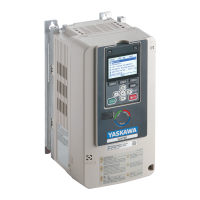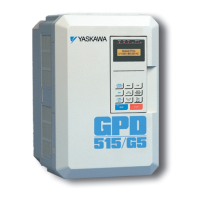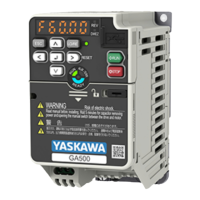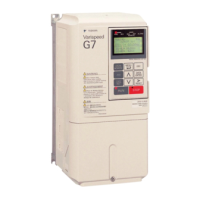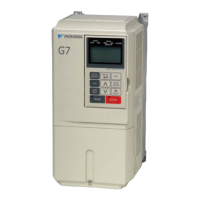Varispeed G7 Control Modes
10-3
* 1. The variable speed control range. (For continuous operation, the motor's temperature rise must be considered.)
* 2. The speed deviation in relation to the maximum speed with a rated load and when the load is stable. (For open-loop vector control 1 and 2, the motor temperature
must be 25 °C ± 10 °C.)
* 3. The speed response guidelines indicating the extent of the motor's actual speed gain in proportion to the speed reference, which changes in a sinusoidal wave
form, within a range where motor torque does not become saturated.
* 4. A guideline for the motor torque that can be generated when started at a low speed and its output frequency (rotations) at that time.
* 5. This function limits the maximum motor torque to protect the machine and the load.
* 6. This function directly controls the amount of torque being generated at the motor and its rotation direction, e.g., to control force.
* 7. This function controls the amount of motor slip that occurs to prevent mechanical shock, when replacing a torque motor, etc.
* 8. This function performs simple positioning control (servo lock), without using an external positioning control device.
* 9. This function instantaneously estimates (or detects) the speed and rotation direction of a coasting motor, and quickly starts it without subjecting it to shock.
* 10.This function automatically adjusts the voltage applied to the motor to optimize the motor's efficiency with light loads.
* 11.This function improves the deceleration time without using a braking resistor by making the motor winding absorb regenerative power. As a standard, this func-
tion is effective with a motor running on 160 kW or less with a high-inertia load.
* 12.This function enables proportional gain in relation to changes in the speed reference, even for low rigidity (corresponds to the servo's model gain control).
* 13.Set the maximum output frequency (E1-04) for open-loop vector control 2 to a value not exceeding 60 Hz. Use within a speed control range of 1:10 for torque
control on the regenerative side.
Applica-
tion
Func-
tions
(Cont.)
Torque Limit-
ing
*5
No No
Yes (except during
acceleration/decel-
eration, below min-
imum frequency, or
during reverse
rotation)
Yes
Yes (except below
minimum fre-
quency and during
reverse rotation)
Torque Con-
trol
*6
No No No Yes
Yes (except below
minimum fre-
quency and during
reverse rotation)
Droop Con-
trol
*7
No No No
Yes (except for
0min
−1
and dur-
ing reverse rota-
tion)
Yes (Except below
minimum fre-
quency and during
reverse rotation)
Zero-servo
Control
*8
No No No Yes No
Speed Estima-
tion (Detec-
tion)
Instantaneous
Speed
Search
*9
Yes (speed and
rotation direction
estimation)
Yes (speed detec-
tion and rotation
direction estima-
tion)
Yes (speed and
rotation direction
estimation)
Yes (speed and
rotation direction
detection)
Yes (speed and
rotation direction
estimation)
Automatic
Energy-saving
Control
*10
Yes Yes Yes Ye s Ye s
High-slip
Braking
*11
Yes Yes
(Under develop-
ment)
(Under develop-
ment)
(Under develop-
ment)
Feed Forward
Control
*12
No No No Yes Yes
Table 10.1 Overview and Features of Control Modes
Control Mode
V/f Control
without PG
V/f Control
with PG
Open-loop Vec-
tor Control 1
Flux Vector
Control
Open-loop Vec-
tor Control 2
Artisan Technology Group - Quality Instrumentation ... Guaranteed | (888) 88-SOURCE | www.artisantg.com

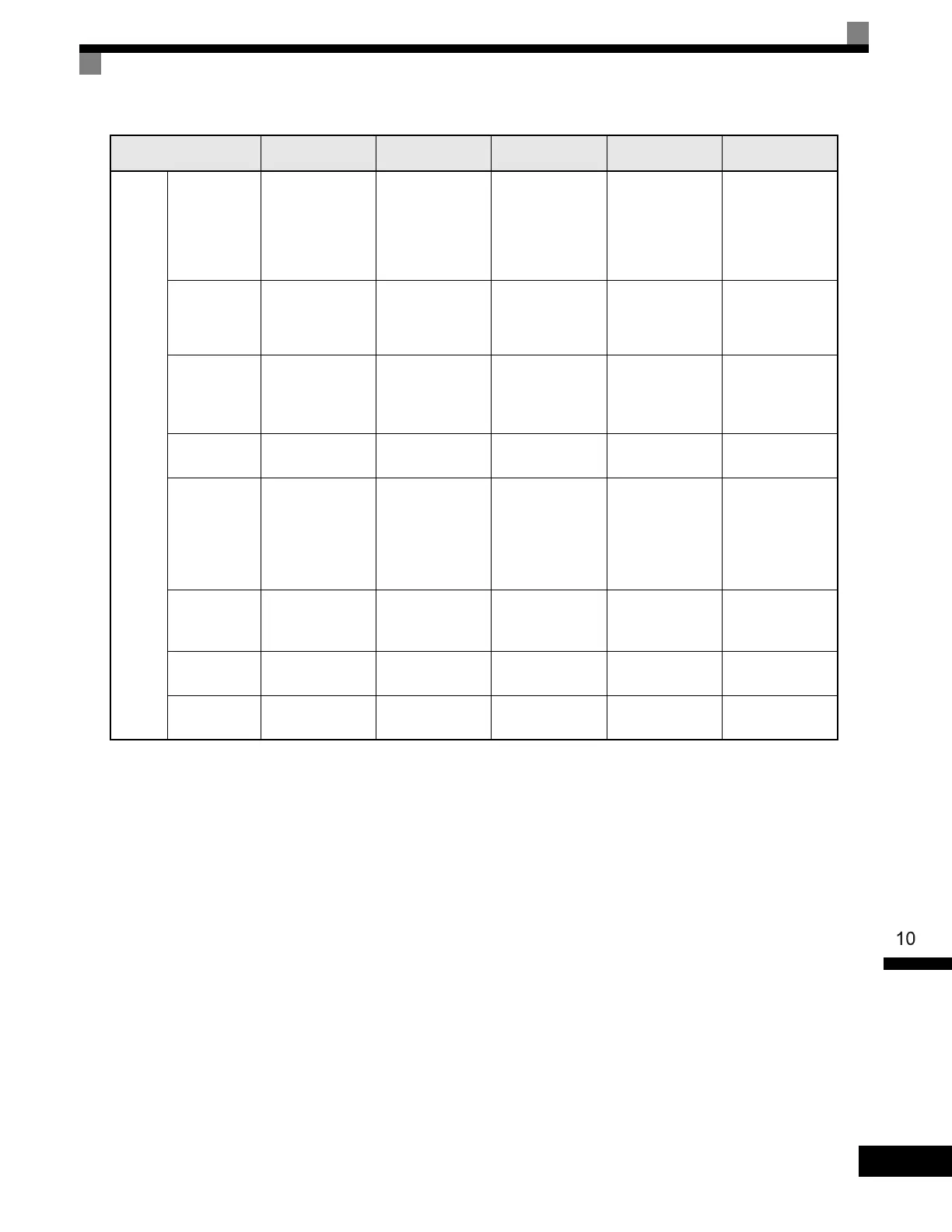